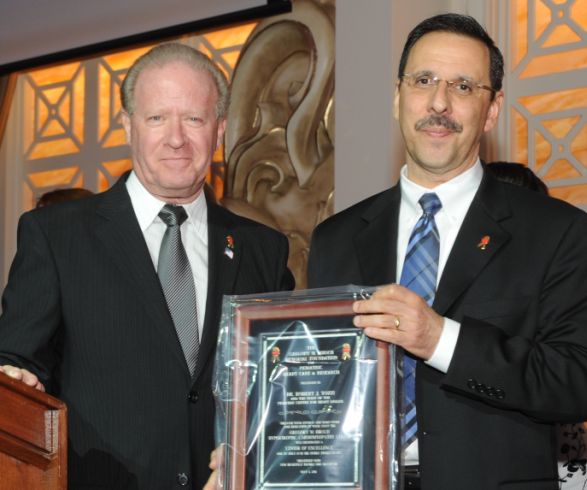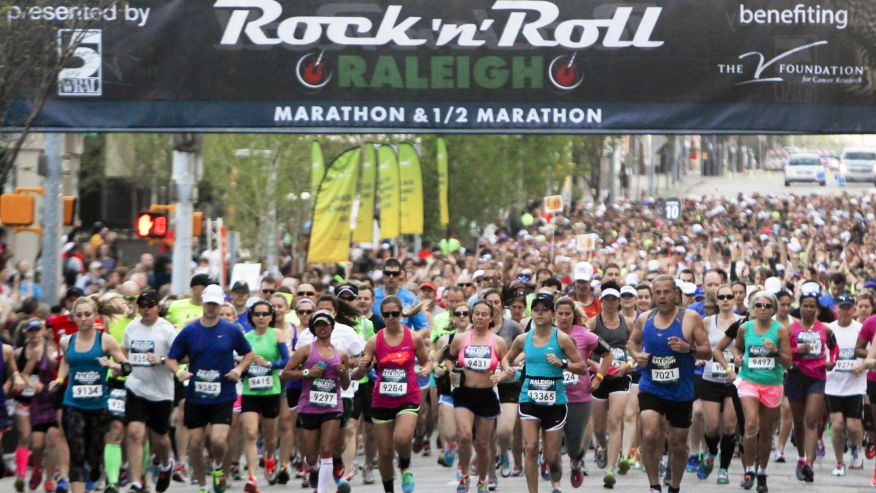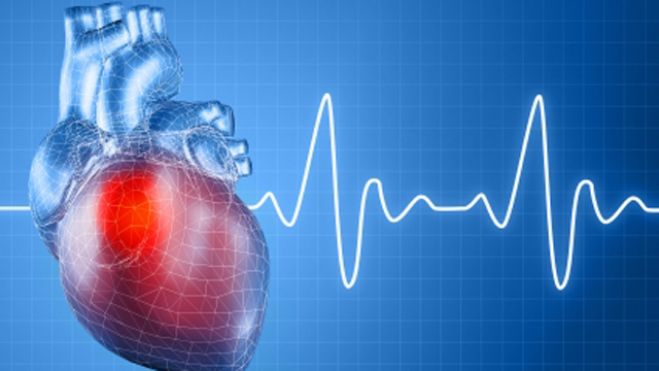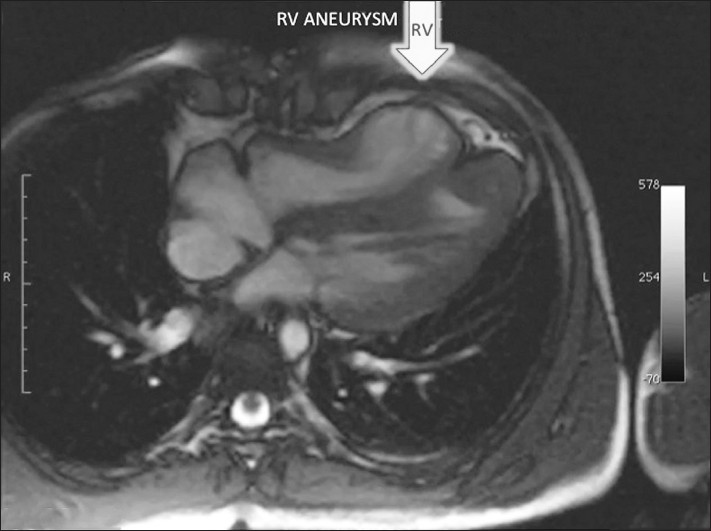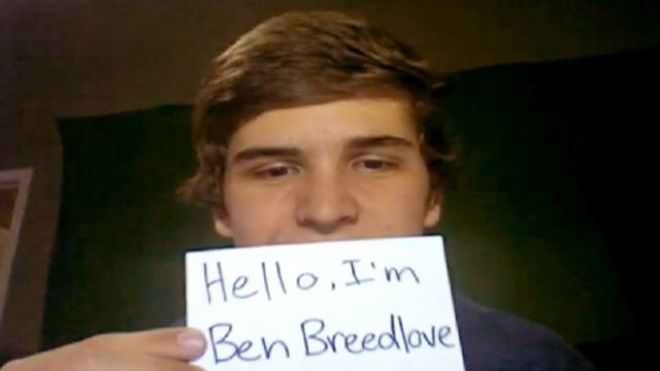Category Archives: Hypertrophic Cardiomyopathy
19-Year-Old Male Athlete With Bicuspid Aortic Valve and Athletic Heart Needing Clearance Prior to Professional Soccer Tryout
Tranquility49, “Dr. Robert J. Tozzi: Hidden Heart Ailments in Children and Adults,” International Business Times, 12 May 2014
Stories From Main Street: Using A Family Tragedy To Help Diagnose Congenital Heart Defects, WCBS NewsRadio 880, 21 April 2014
Racing Death: How Can Runners Be Saved from Cardiac Arrest? FoxNews.com Health, 18 April 2014
10 Steps to Protect Against Hypertrophic Cardiomyopathy
Click on Image for FoxNews.com Posting
Published February 11, 2013
FoxNews.com
As if it were yesterday, I recall the death of 18-year-old Ben Breedlove, who suffered from hypertrophic cardiomyopathy (HCM), an ailment in which I specialize as a pediatric cardiologist.
I have seen it rob too many young people unnecessarily of a long and fulfilling life.
Here are 10 steps to protect your children, family members and anyone you love against the ravages of hypertrophic cardiomyopathy:
1. Remember that statistically if one member of your family has been diagnosed with HCM, then one-half of your family members are at risk for developing this disease. Evaluation of first-degree relatives on a regular, repetitive basis can go a long way towards correct diagnosis and effective treatment. It is imperative to extend this medical information to as many relatives as possible. Try to make the effort to contact others, even if you are estranged from them. Remember to breed love.
2. Always remember that hypertrophic cardiomyopathy is a sneaky disease: It is many times missed or misdiagnosed. Common diseases that are confused with HCM are asthma, mitral valve prolapse, anxiety, coronary artery disease and an athletic heart.
3. Be aware of symptoms that require prompt medical attention:
• Chest pain with exercise or simple activities such as walking.
• Passing out is a very important symptom that requires prompt medical attention.
• Shortness of breath, lightheadedness, and extreme tiredness are other symptoms of HCM.
4. Avoid circumstances that increase your risk:
• Avoid hot weather and dehydration.
• Be aware of the need for vigorous fluid resuscitation during infections or gastroenteritis or exercise.
• Avoid burst of activity.
• Avoid isometric activity.
5. With hypertrophic cardiomyopathy in humans, the lining of the blood vessels in the heart tends to be affected. Unfortunately, this is not just limited to the heart, but also involves the blood vessels networked to other organs throughout the body:
• Foods that improve the lining of your blood vessel include nuts, seeds, dark chocolate, fruits and vegetables.
• Prolonged periods of walking help revitalize the lining of your blood vessels.
• Foods that decrease the function of the lining of blood vessels include sugary drinks (soda), high salt, high fat, high sugar, high fructose corn syrup, and even high protein. Life is about balance and a balanced diet.
6. Beware of diseases or circumstances that can worsen hypertrophic cardiomyopathy, or cause it to progress faster:
• Sleep apnea, diabetes, obesity, hypertension, rapid weight gain and hypercholesterolemia.
• Steroids, including drugs like prednisone, anabolic steroids, and testosterone can aggravate the condition. The use of growth hormones or supplements that increase growth hormone or testosterone levels may also accelerate HCM.
7. Avoid drugs that can increase your risk of having a bad event:
• Avoid stimulants and decongestants.
• Avoid alcohol consumption as its diuretic effect can lead to decreased blood volume.
• If you are on a blood-thinner (e.g., Coumadin), remember to have your blood checked monthly.
• For any abrupt new onset of neurologic symptoms, such as muscle weakness, severe headache, or change in vision, seek prompt, urgent medical attention.
8. Once diagnosed with HCM, you are restricted from competitive sports and extremes of exercise, such as avoiding heavy lifting.
9. If you are on a beta blocker for HCM, it is imperative that it is taken daily. Missing a dose results in a rebound effect that can make your heart rate increase and put you at an increased risk.
10. Enjoy life, keep active and eat healthy. Most people with HCM have a normal life expectancy.
Dr. Robert J. Tozzi is Chief of Pediatric Cardiology and the Founding Medical Director of The Gregory M. Hirsch Hypertrophic Cardiomyopathy Center at the Hackensack University Medical Center in New Jersey. He is the co-author of several papers published in refereed research journals, and he has lectured extensively in his field at numerous professional conferences. To learn more, visit his website at DRTOZ.com.
Read more: http://www.foxnews.com/health/2013/02/08/10-steps-to-protect-against-hypertrophic-cardiomyopathy/#ixzz2KheuMOYG
Hypertrophic Cardiomyopathy in a Young Adult with RV Aneurysm: Report of a Rare Finding and Review of the Literature
Texas Teen Leaves Behind Inspirational Video After Christmas Death
Hypertrophic Cardiomyopathy
The Saving America Series
 Physicians commonly make mistakes in EKG readings for children!
Physicians commonly make mistakes in EKG readings for children!
In a study published July 2011 in The Journal of Pediatrics, it is made clear that mistakes are occurring too often in the reading of EKG for children and young athletes. Unfortunately, some in the medical community seize upon the flaws in childhood screening to conclude that it is just not worth screening children.
I am flabbergasted that more professionals do not view these documented flaws in test reading as an urgent call to do better.
I have proposed a systematic approach to screening children that has both accountability and education built into the system. Designing screening programs that are specialized to accomplish a specific medical task can reduce mistakes and increase the accuracy of results. This approach also reduces the cost of screening and, most important, does a better job of protecting our children’s health.
We live in a culture where millions can be spent to perfect the perfect aluminum baseball bat to ensure a greater number of home runs, even though it increases the risk of injury and death to our children.
Let’s begin to get our priorities straight and put our efforts where it counts: our children’s health and future security.
Death on the Playground: Anthony’s Story
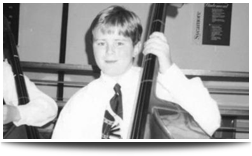 One ordinary day on the playground, a 12-year-old boy announces to his friends, “I have no pulse.” He then collapses to the ground in an apparent full cardiac arrest.
One ordinary day on the playground, a 12-year-old boy announces to his friends, “I have no pulse.” He then collapses to the ground in an apparent full cardiac arrest.
More than a decade ago, this tragic scenario played out for real.
Young Anthony’s heart had stopped beating, and he was judged to be clinically dead. The boy was air-lifted to Cincinnati Children’s Hospital. While en route, he had 13 electrical shocks applied to his chest in a desperate attempt to revive him. Eventually his heart was shocked back into its beating state; but by that time, severe, irreversible brain damage had occurred.
This preventable and treatable cardiac arrest left Anthony in a coma for more than a year. Once out of the coma, he was left with severe handicaps that will require a lifetime of special care.
The cardiac condition that caused this tragedy is called Wolff-Parkinson-White Syndrome (WPW). Simply described, the syndrome involves an extra piece of muscle woven into the overall mass that creates an electrical short circuit in the heart’s tissue. In some individuals, this condition is benign; in others it can lead to palpitations or tachycardia; but, in a few, as in Anthony’s case, it can be deadly, leading to sudden and unexpected full cardiac arrest.
In the most recent large-scale school screenings, this condition has been identified in up to one child per 100-1000. The good news: WPW is 100 percent curable. A simple procedure, called an ablation, is used to remove the excess heart muscle, which removes all future risk of sudden death.
But how can you detect a disease that may have no symptoms, even right up to last second, just before the onset of cardiac arrest? A simple EKG can make the diagnosis.
Anthony’s parents have chronicled his story in their book “Resurrecting Anthony.” I had the pleasure to meet with this heroic couple during a Fox News interview in which I participated. The following is excerpted from an e-mail that Anthony’s mother, Linda Cole, sent me.
“Dear Dr. Tozzi,
It was such a pleasure meeting you and your wife on Tuesday at Fox. I am quite excited that you are pursuing cardiac screening for children. This would save many families much needless heartache. I also believe that it would save Medicaid dollars in the long run. If nothing else, I hope that parents can at least be educated and given the option of paying for an EKG…”
Anthony’s mom is right. This tragedy could have been avoided in two ways:
- Required early cardiac screening for children
- Rapidly available automated external cardiac defibrillator units at all schools, playgrounds, athletic fields and public places in general.
The alternatives are starkly defined:
By using established EKG technology that costs about $40 per patient, physicians can diagnose and cure virtually all detected incidences of the bad form of WPW in young children, who will go on to lead normal, productive lives. And tragedies like Anthony’s, which can result in subsidized healthcare costs mounting into the hundreds of thousands over a lifetime, can become, literally, a thing of the past.
Read more: http://www.foxnews.com/health/2011/06/24/death-on-playground-anthonys-story/#ixzz1TJyeX1Hs


